Winter weight
Synopsis: With colonies now rearing brood there is a risk of them starving. Here are a couple of ways of checking the winter hive weight to determine if you need to add fondant. These checks should be conducted every 2-3 weeks until the bees are foraging in the warmer spring weather.
Introduction
Last week I described how to determine what was happening inside the hive in winter.
By carefully inspecting the debris that falls through the open mesh floor (OMF) you can tell:
- the size and position of the cluster,
- whether they are rearing brood (or, more precisely, whether there is brood being uncapped … I don’t think you can tell if there is open brood simply by inspecting the debris),
- if frames of stores distant from the cluster are being used.
In addition, I explained the importance of checking that the hive entrance was clear of corpses. These accumulate during long periods of cold or inclement weather. If the hive entrance is small enough to prevent mice from getting in – and it should be – then there’s a chance these corpses will build up sufficiently to stop bees getting out.
These two checks take no more than a few minutes and should be conducted at least monthly. There’s no harm in doing them more frequently because – performed correctly – the colony isn’t disturbed at all.
Last week I described these as ”The bees don’t even know they’re being checked” checks.
The final important winter check is to determine the weight of the colony.
Avoirdupois {{1}}
If the bees are rearing brood they will be using their winter stores. Of course, they will have been using these stores throughout the late autumn and winter, but critically, the rate at which they use their stores will increase once brood rearing starts.
I’ve illustrated this before schematically, but have attempted to improve the diagram a little this year.
Once they have reared some brood, they’ll have more bees to help them rear some more brood, meaning that the rate at which the stores are used will increase.
The solid black line is the weight of the colony. In the late autumn the colony almost certainly goes through a broodless period {{2}}. During this broodless period the colony is simply using stores to maintain the adult bees in the cluster. I’ve drawn this as a straight line (i.e. a constant rate of stores usage), but I bet it varies with the ambient temperature as more or less stores are required for essential metabolic processes.
But at some point the queen starts laying again and the colony have some larvae to feed.
I’ve indicated the start of brood rearing by a dashed vertical line. Typically I usually guesstimate this occurs around the winter solstice {{3}}, but for our purposes the precise timing is irrelevant.
Twenty one days later these bees emerge, by which time the queen has already laid some more eggs.
Things start to pick up.
What started as a small palm-sized patch of brood now covers almost the side of a frame, in a month it will be double that.
Or more.
And all of those hungry mouths mean more stores are needed, so the rate at which the stores are consumed will increase, meaning that the colony weight will decrease … and it will continue to get lighter faster {{4}}.
Silent spring
A few crocus and snowdrops are out, but the weather is too poor for foraging.
The weather gradually improves and more spring flowers become available.
There’s gorse available, of course. There always is.
The bees can now forage a little more. On unseasonably warm days the bees take cleansing flights and might collect a little pollen and nectar.
I’ve imaginatively and artistically illustrated this in the graph with some little yellow flowers 🙂
But, all the time, more brood is being reared.
If the nectar coming in is insufficient to feed the brood – and early in the season it will be – then the bees will continue to make inroads into their precious stores.
And the colony will get lighter.
And lighter.
Until it drops below some critical threshold and enters the ‘danger zone’ – the absolute weight doesn’t matter {{5}} – at which point the colony must go into self-preservation mode.
Brood will be abandoned, cannibalised and/or ejected from the hive. The queen will stop laying. The colony will be forced back into a ‘maintenance’ state.
A protracted cold period, or a fortnight of rain, and there’s a very real danger the colony will starve to death.
At the very best the early spring expansion of the colony will be severely retarded and it is unlikely to recover until mid-season.
All of which is easily avoided by carefully monitoring the amount of stores the colony has.
However, remember you’re supposed to be conducting ”The bees don’t even know they’re being checked” checks, not pulling open the brood box and rummaging through to count frames of sealed stores.
But since the number of bees in the colony is steady (or likely decreasing slowly) and there’s effectively no nectar being collected, the weight of the hive is a good surrogate measure to determine the level of stores available.
Winter weight
There are all sorts of ingenious solutions to determine the weight of a full hive.
Probably the most complicated and expensive is to purchase (or build) a set of electronic hive scales that automagically communicate with an app on your smartphone to give you a real-time readout of the hive weight in kilograms. You can record the weight of a few thousand foragers leaving the hive in the morning {{6}}, and see them return by nightfall together with the 1500 g of nectar they’ve collected.
At the other end of the spectrum – in terms of both cost and information – is hefting the hive. Using nothing more than than a gentle lift and good judgement you can readily tell whether the hive contains sufficient stores for the bees to continue to rear brood. You won’t be able to tell the exact weight of the hive, but you will be able to determine whether it weighs enough.
I’ve used both methods.
However, I routinely only do the latter.
I’ll leave a discussion of automated hive monitoring to another day {{7}} and will instead briefly discuss two methods that are quick, cheap and easy (choose any three).
One method – hefting the hive – costs nothing, but requires a bit of experience and judgement. The second method involves – inaccurately, but reproducibly – weighing the hive. This costs about £10 to implement and provides a good way to build up your confidence that your hive hefting is probably good enough to ensure colony survival.
And good enough is probably all you need …
Hefting the hive
This is easier to show than describe:
The general idea is that you judge how much effort is required to lift one edge of the hive – typically the back – a couple of centimetres off the hive stand. As you can see from the video, other than slackening off the strap that secures the hive to the stand {{8}} there’s nothing else involved.
Comparisons help here.
It helps to have the ‘muscle memory’ of how much the hive weighed last time you checked, or – even better – how heavy it should feel like at this stage of the winter.
Both come with experience, and improve with lots of experience.
If you have several hives in the apiary, all with the same hardware, then hefting one after the other makes this comparison relatively easy. If – like in my apiaries – you have a range of different roofs, it can help to remove the roof to get a better ‘feel’ for the hive weight.
The hive should feel heavy.
If the hive feels light it probably is light.
Too light.
Weighing the hive
This second method is a little bit more involved.
I’ve previously recommended using a set of luggage scales to weigh the hive. You attach them to one edge of the hive floor, pull up gently, let the weight stabilise and then record the value on the digital display.
Don’t try this using luggage scales with an analogue display, or ones that don’t emit a helpful ‘beep’ and freeze the display when the weight stabilises.
Just don’t 🙁
Suitable luggage scale cost about a tenner. Mine are very friendly but cannot spell.
However, those of you who have tried this method will be aware of the world of grief that is encapsulated in the words ”let the weight stabilise”, particularly if you do not have a lot of upper body/arm strength.
Here’s the problem … you are trying to hold half the weight of a full hive stationary. Probably {{9}} your arms will be bent at the elbow.
The hive will probably weigh 30+ kg.
Even half that is a lot to hold steady while you wait for the tinny electronic ‘beep’ to tell you to relax and lower the hive gently back onto the hive stand.
I struggle to do this (more now than I used to) and I’m tall and relatively strong.
Before I explain an easier way to achieve the same thing I ought to say a couple of words about determining the total hive weight.
Physics … Ewwww!
If everything – frames, bees, stores – in the hive are evenly distributed, then opposite sides of the hive (weighed as described above) will be a fraction less than half the total weight {{10}}.
Since the ‘stuff’ in the hive is probably not evenly distributed the weight you record will either be less than or more than half the weight of the hive, depending on whether you have picked the heavy (C in the figure above) or light (D) side of the hive.
However, the sum of the two sides (C + D) will – with the exception of the fraction lost due to vectors as described in the last footnote – still equal the total weight of the hive and contents.
So, if you want to know the total weight either measure the weight of opposing sides and add them together.
Or, measure one side, double it, assume everything is about even and enjoy being a beekeeping free spirit.
You radical 😉
Let the weight stabilise
The solution to the arm-wrenching, patience-draining, interminably-wobbling, weight stabilising problem is to use a lever.
You need two pieces of stout wood, a strong nut and bolt and a few suitably sized washers. One piece of wood forms a vertical support. The second piece of wood is a lever. It is attached near the top of the support using the bolts/washers/nut.
The digital luggage scales are tied to one end of the lever.
You need a way of attaching the hive to the scales. I use a 6 mm roofing bolt.
All my hive floors are drilled with a 6-7 mm hole through the middle of each side of the floor {{11}}. This is in the side runner of my kewl floors, underneath the OMF and the Varroa tray.
The roofing bolt is pushed fully into this hole and holds everything very securely.
Using this ‘Heath Robinson’ contraption is simplicity itself.
Place the support vertical and adjacent to the hive, attach the scales to the hive floor, gently press down on the other end of the lever and lift the hive no more than 1-2 cm from the hive stand.
Wait a few seconds for the ‘beep’ from the scales, lower the hive gently onto the stand and record double the weight in your hive records.
Or for those of you who are not free spirits but wear a belt and braces with your beesuit, weigh the opposite side of the hive as well, add the weights together and write up your notes 😉
How reproducible is this?
Actually, pretty good 🙂
I did a bunch of measurements on a range of dummy hives of known weights {{12}}.
By measuring both sides and adding the recorded weights together I determined that the underestimate of the true hive weight was about 8%. With care, the variation in weight of repeated independent measurements of one side of the hive was in the range 0.3 – 1.7%.
That’s more than close enough for me.
You do need to take care to standardise the method you use:
- make sure the upright support is vertical
- ensure that the pull exerted by the scales is as vertical as possible.
- lift the hive by the same distance off the stand. The smaller the distance the more accurately you will determine the total weight {{13}}.
- push down on the lever gently and smoothly. Don’t jerk the hive. It takes relatively little effort to hold the hive stable for the weight to be recorded {{14}}
All of which is pretty easy to achieve.
Remember – and this is the last time I’ll write this – these inspections are ”The bees don’t even know they’re being checked” checks {{15}}. All of the above can be achieved in 1 minute with no disturbance to the colony if you are reasonably careful.
Then what??
Remember, the weight of the hive is not important, it’s whether they have enough stores to rear brood. However, regularly recording the weight as I describe here will allow you to judge how fast the colony is getting through the stores.
Ideally weigh the hive and heft the hive.
You will then more quickly learn to make a judgement based upon hefting along.
Will the colony be underweight – based upon the hive hardware, the weight of the bees, frames and stores – in a week or two when you next visit?
Bees can use their stores fast when they’re unable to forage and rearing brood. Studies by Tom Seeley have demonstrated colony weight reduction in ‘maintenance’ mode was perhaps 1 kg per week, but that this level increased significantly once brood rearing started in earnest.
If you consider that the colony is already too light, or will be too light before your next visit, you must add some stores.
And, at this time of the year you should use fondant, not syrup, to feed bees.
Feeding fondant
I’ve written extensively about feeding fondant to bees, both in midwinter and at the end of the summer. I only use commercial baker’s fondant, not the overpriced stuff sold to gullible wealthy beekeepers.
The priority is to add the fondant as close as possible to the cluster. You want the bees to have immediate access to it. You don’t want them to have to crawl half way across the hive, up through a hole in the crownboard and into that cold empty void under the roof.
Brrrr.
I add fondant in 1 – 5 kg blocks. The amount depends upon the size of the colony, the likely time of my next visit and the probability of their being nectar readily available before then.
I always err on the side of generosity {{16}}.
You can easily remove unused fondant …
… or you can guiltily remove pathetic handfuls of starved bees.
Your choice 🙁
Pack the fondant into clear plastic food trays {{17}} rescued from the recycling bin. Once filled, wrap them with a couple of layers of clingfilm, or place them in a securely sealed plastic bags. The fondant will absorb moisture from the environment, particularly if it’s warm. I just keep a pile of them in the car for my winter visits to the apiary.
Remove all the clingfilm. Bees have a horrible habit of dragging it down into the brood nest, chewing it up and incorporating it into brace comb.
I place the fondant on top of the frame bars, directly over the cluster. My crownboards are reversible and have a deep upper (i.e lower when reversed!) rim which accommodates the tray of fondant.
I add the insulation block back over the crownboard and replace the roof, secure in the knowledge that the colony has sufficient food for the next 2-3 weeks.
If your crownboards aren’t reversible with a deep rim make some that are use an eke or an empty super.
{{1}}: Weight; degree of heaviness orig. 1600 in Shakespeare’s Henry V.
{{2}}: Remember, all of this is latitude and climate dependent.
{{3}}: But, again, this is latitude and climate dependent and will vary from year to year.
{{4}}: If that makes sense.
{{5}}: And will vary according to colony size, amount of brood etc.
{{6}}: On a summer day, not on a drizzly cold morning in February. At least, I hope not.
{{7}}: Or never mention it again. I don’t think it’s relevant to amateur beekeepers, though designing and building the monitoring equipment is an interesting technical exercise. For geeks.
{{8}}: Remember ”Do as I say, don’t do as I do” … and, no, my next thought was not ”Hmmm … time for another super”.
{{9}}: Unless you are a) freakishly tall, b) standing on a ladder or c) your hives are sunk in pits.
{{10}}: You ‘lose’ a fraction of the weight because some is still being taken by the side of the hive still on the stand … this is mass vector calculations in physics and I am singularly unqualified to explain it properly. Been there, done that, failed the exam.
{{11}}: Why middle? Aargh! More vectors … ‘nuff said. Just make sure it’s equidistant between the front and back of the hive
{{12}}: Once a scientist, always a scientist …
{{13}}: It’s those damned vectors again. I even investigated lifting the hive, adding a pencil-thickness piece of wood under one side at a time and lifting sufficiently so that the wood just fell out. Don’t bother. Eyeball it. It will be close enough.
{{14}}: And for the sake of the bees, release the pressure on the lever equally smoothly.
{{15}}: And I won’t be writing it again because if the hive is underweight you are going to have to open it and add some food … and you cannot do that without disturbing the bees.
{{16}}: Don’t waste your time, or – more importantly – disturb the bees, just to add a measly 250 g.
{{17}}: Why clear? So you can see how fast it’s being consumed. Again, less disturbance to the colony when you next check.
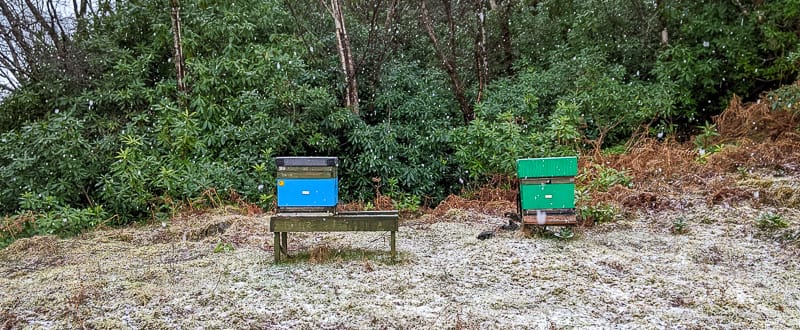
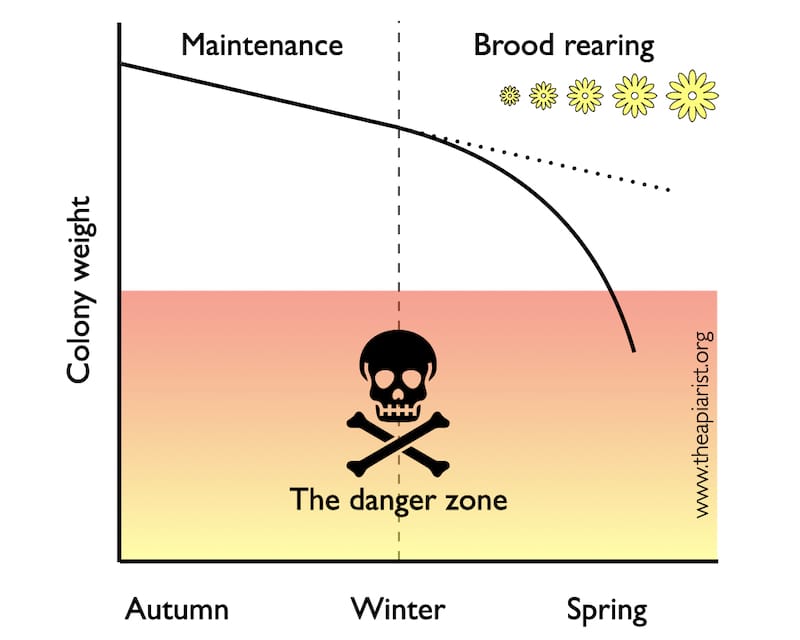

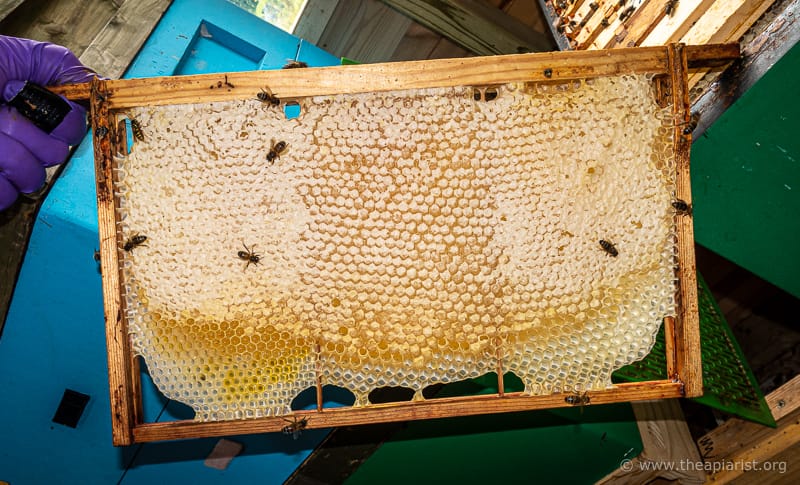
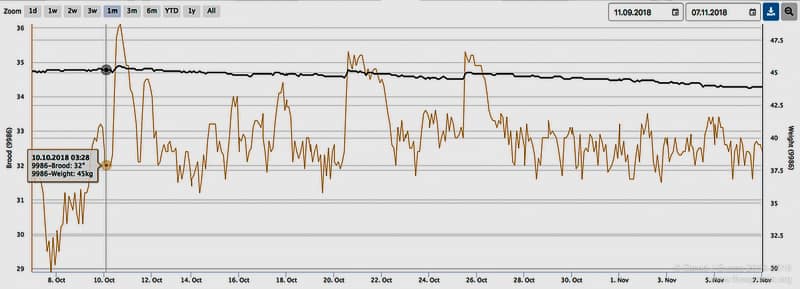
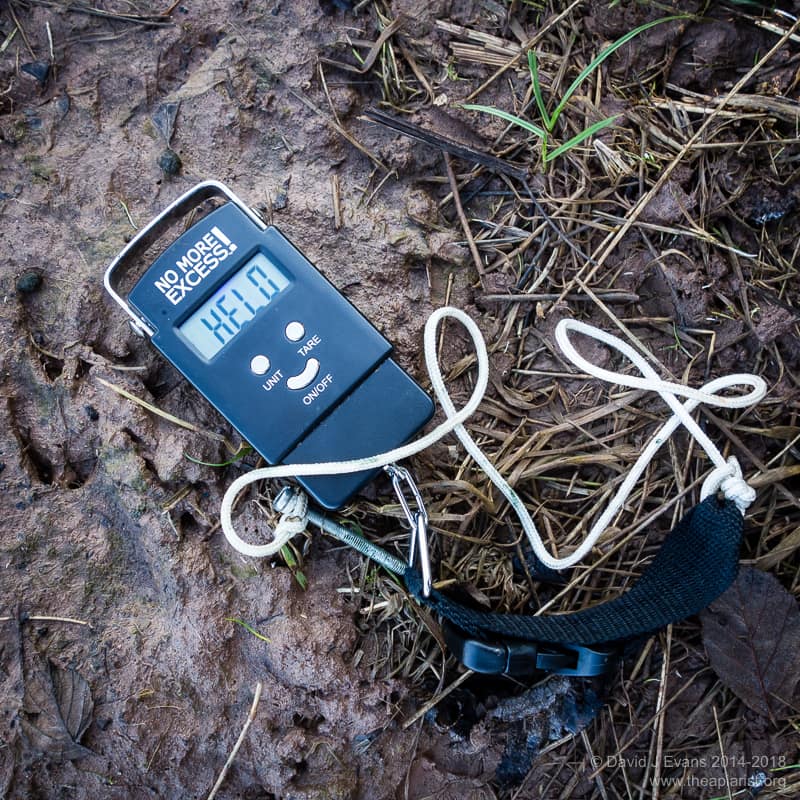
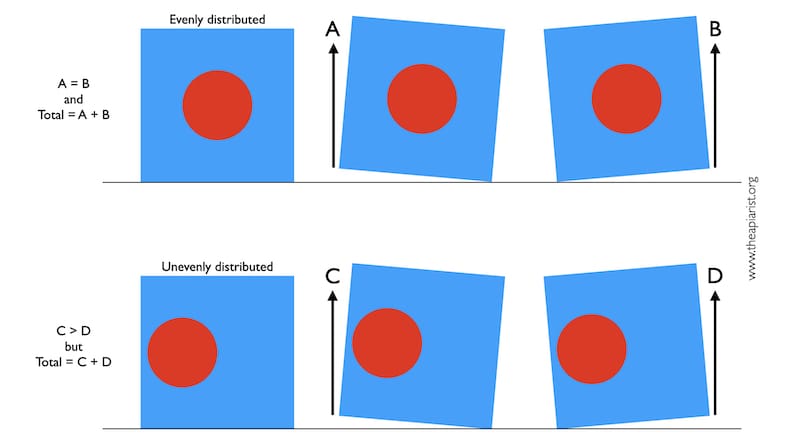
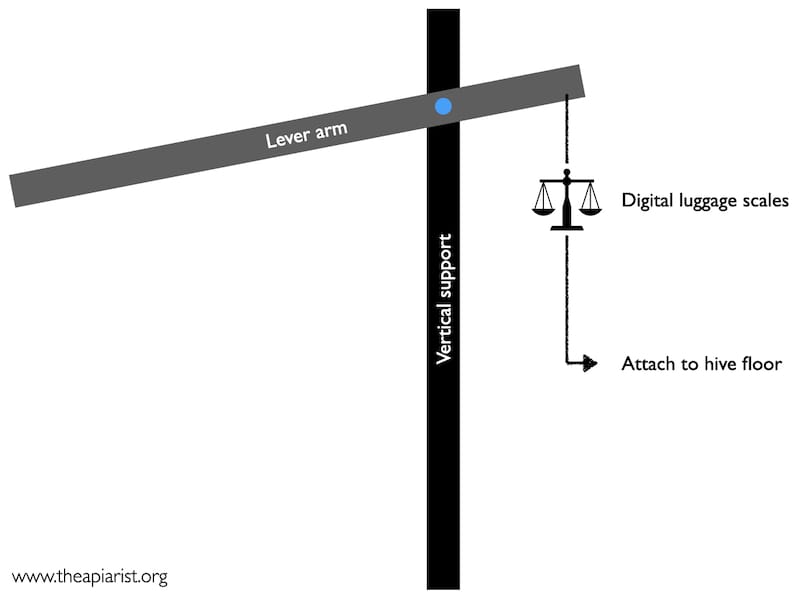
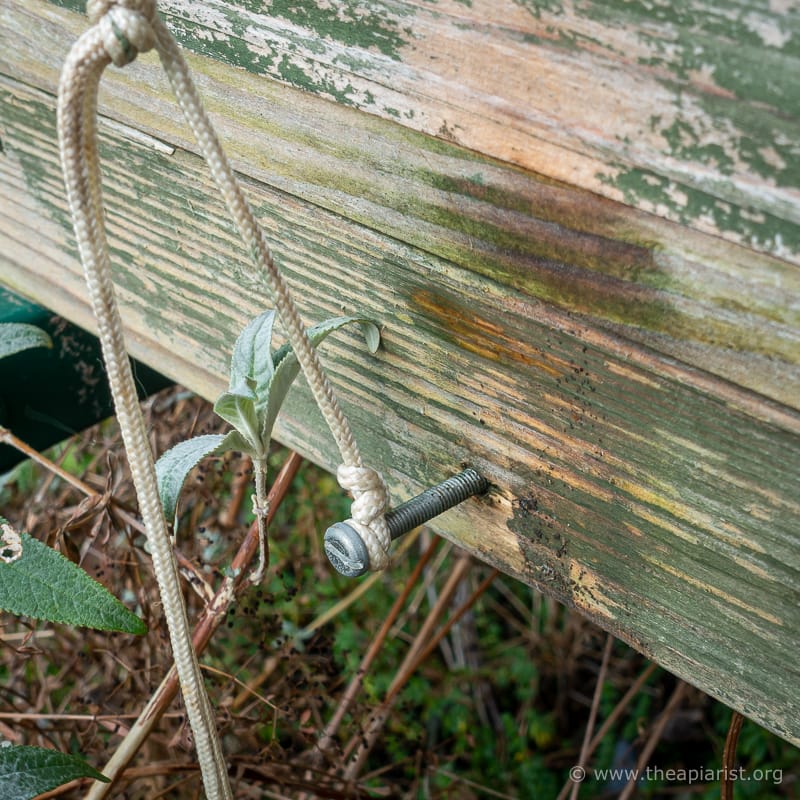
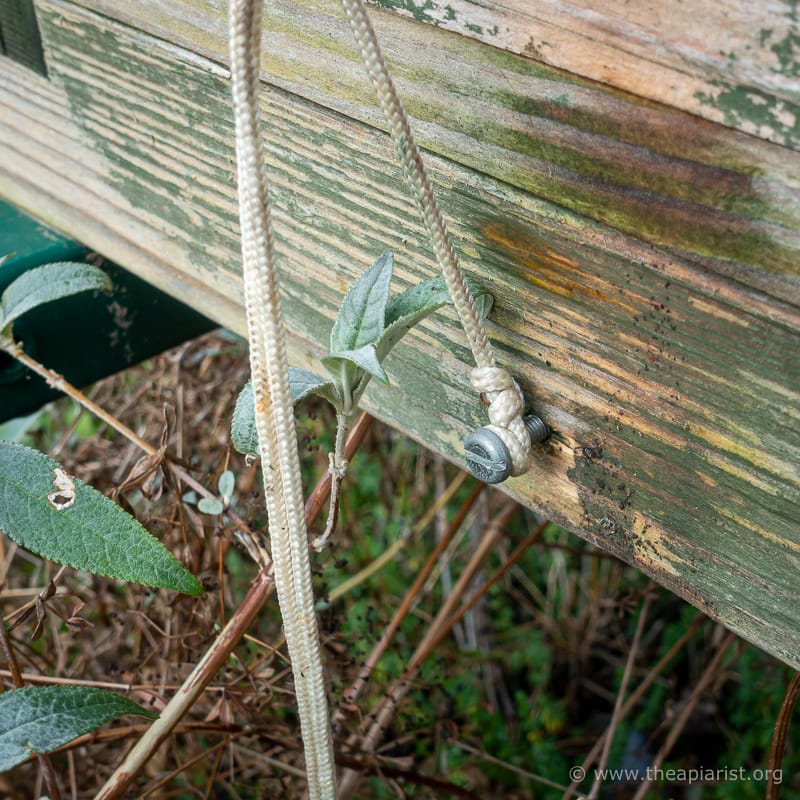
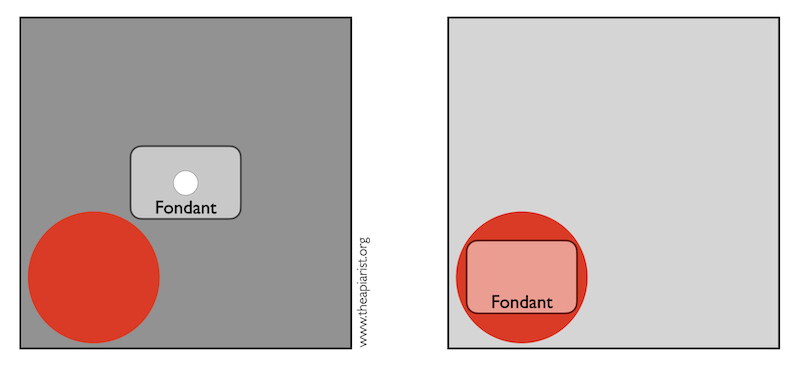
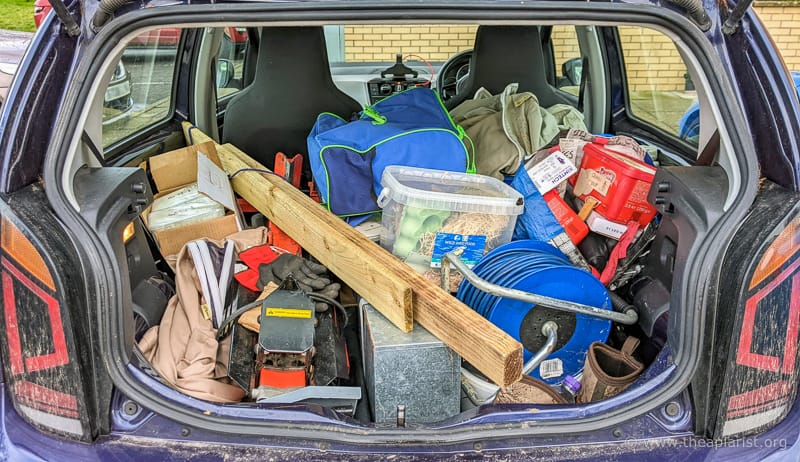
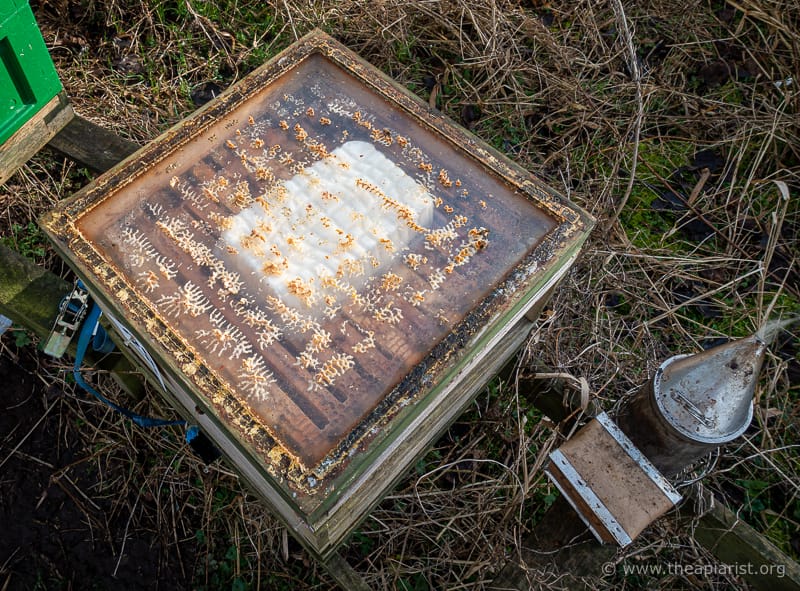
Join the discussion ...